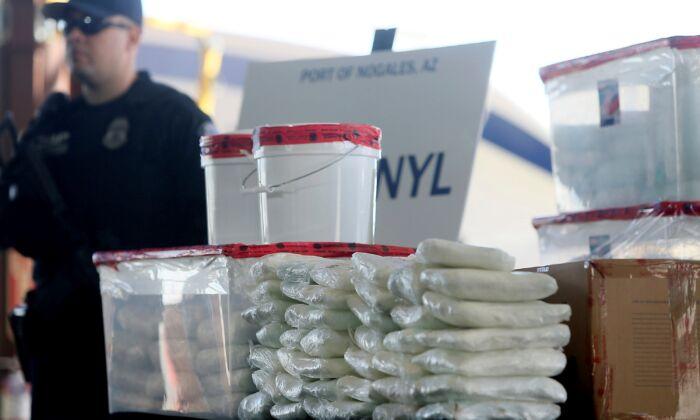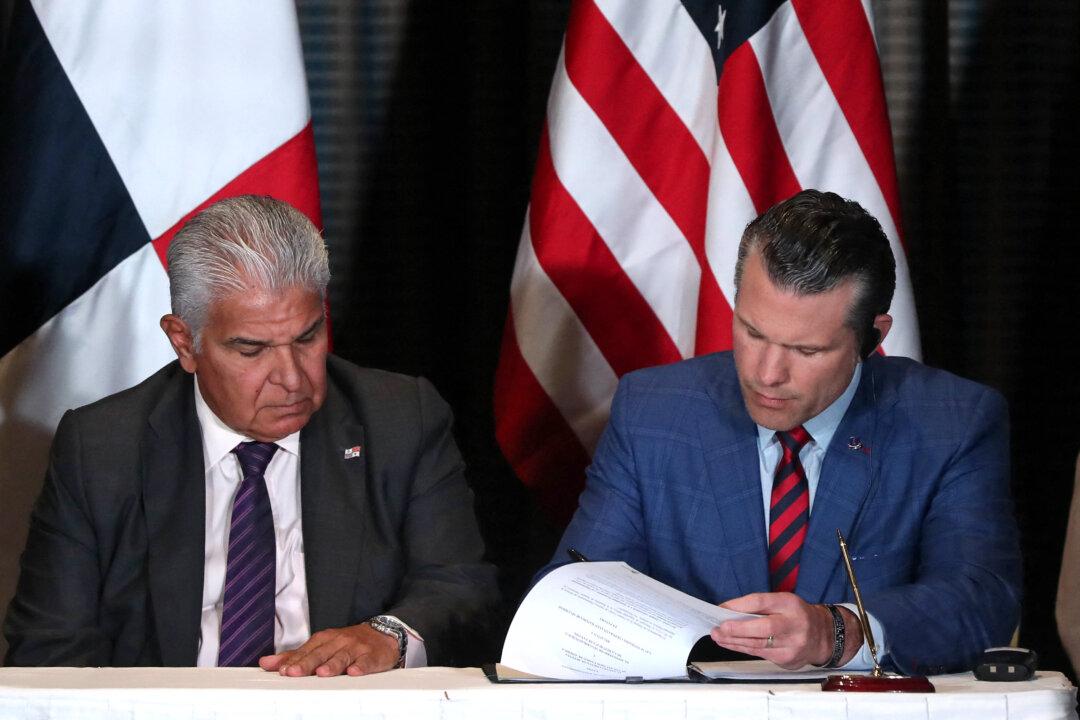Commentary
“Just saying no” is no longer enough. Now, one has to stay off the bus and train as well, to limit trace exposure to deadly illegal drugs such as methamphetamines and fentanyl, which kill over 100,000 Americans annually.
As little as a few grains of fentanyl is enough to kill. Residues of one or the other drug were found in 100 percent (
pdf) of public transport vehicles sampled by a University of Washington team in Seattle and Portland.
Meth is making a comeback, and its fatalities are “way up even if you look at the Texas numbers,” according to a Houston Forensic Science Center expert interviewed by the Texas Tribune.
Fentanyl has been found in
marijuana and cocaine. It’s regularly mixed with
xylazine, a debilitating veterinary sedative known as “tranq,” and found with a host of other illegal street drugs, including fake prescription pills. The use of relatively
cheap fentanyl to adulterate street drugs increases the bang for the buck and addiction rates, both of which increase short-term dealer profits, and long-term mortality.
The University of Washington study found drug residues on public transit through air and surface sampling in buses and light rail, with airborne meth found in all light-rail vehicles and fentanyl residues found in a quarter of the air samples.
According to Mike Lindblom writing in the Seattle Times, “Scores of transit operators filed safety incident reports about passengers smoking drugs, or even stopped driving because of headaches, dizziness or difficulty breathing.”
Health officials hastened to downplay the study. The medical director of the Oregon Poison Center said on Sept. 7 that, “In most cases, an exposure would be hundreds to thousands of times lower than what we would expect to cause clinical effects.”
A transit union official was not so sanguine. He told the Seattle Times that the drugs are “everywhere,” that long-term effects of trace exposure are still unknown, and that “it’s unhealthy at any level.”
On Feb. 5 in Seattle, a light-rail operator was taken to the hospital by ambulance for a medical examination after exposure to fentanyl smoke. Employees of King County Metro Transit filed 52 worker compensation claims last year due to drug exposure. Sixteen of those included lost work time.
One of the 78 air samples contained fentanyl that exceeded the Environmental Protection Agency limit for pharmaceutical workers of 0.1 micrograms per cubic meter. Of the surface samples—mostly where residues accumulated—98 percent registered methamphetamine and 46 percent fentanyl.
Law enforcement efforts against illegal drug distribution and use are ongoing. On Sept. 7, for example, the Department of Justice released information on the arrest of 19 suspects in a meth, fentanyl, heroin, and cocaine trafficking ring in
Virginia.
The drug crisis in America is multicausal, including from defunding the police, lack of strong anti-drug laws and enforcement, lack of border controls, lack of surveillance capabilities at ports, and failure of the federal government to obtain counternarcotics cooperation from
China, where most of the precursor chemicals originate, and
Mexico, where most of the drugs are manufactured in their final forms. Mental health and drug rehabilitation facilities are insufficient in number and not mandatory.
Change to ameliorate the fentanyl crisis is too slow, but there are some recent bright spots. The
Food and Drug Administration is making Narcan, which reverses the effects of overdose, available over the counter.
Texas recently won a stay in a case on appeal, allowing it to maintain its floating river barrier in the middle of the Rio Grande, which should help keep out illegal immigrants and at least some drug trafficking.
California has increased its use of the National Guard and X-ray machines at its ports to find illegal narcotics shipments. In the first half of this year, CalGuard helped seize 11,760 pounds of fentanyl—enough to kill every American eight times over. Who knows how much got through.
An experimental fentanyl vaccine is being tested by the University of
Montana, but even if safe and effective, it will not be available for years, during which time hundreds of thousands more victims will likely die.
Democrats are imposing slap-on-the-wrist
sanctions against Mexican cartels that manufacture and traffic fentanyl into the United States and weak laws against possession of fentanyl by users and dealers. One law recently signed by
Oregon Gov. Tina Kotek makes it a misdemeanor to possess between one and five grams of fentanyl and a felony to possess over five grams. A Republican sponsor said it was too lenient. The penalty for a misdemeanor is far too light considering one gram is enough to kill
500 people.
Another bill would make the fentanyl crisis a “
national emergency” and allow the use of seized drug trafficking funds for law enforcement.
Several
Republican candidates for president, including Donald Trump, Ron DeSantis, Vivek Ramaswamy, Nikki Haley, and Tim Scott, have endorsed cross-border military raids against illegal drug cartels in Mexico.
In addition to the reforms mentioned above, America needs a national program to end the interrelated problems of drug abuse, mental illness, and homelessness. This will most likely require national-level mental health and drug rehabilitation centers where individuals who break the law are sent to do time,
get clean, and work, so the mounting drug crisis doesn’t break already strained local and federal budgets.
All these measures are too little, too late, for the hundreds of thousands of Americans who already died from drug overdoses. These losses aren’t only to the individuals who used illegal drugs, but to their families and children, some of whom die from inadvertent exposure. The loss is also to the United States as a whole, which gradually loses the relative economic and military strength that a large population provides, and which helps us defend ourselves and the world.
Views expressed in this article are opinions of the author and do not necessarily reflect the views of The Epoch Times.







